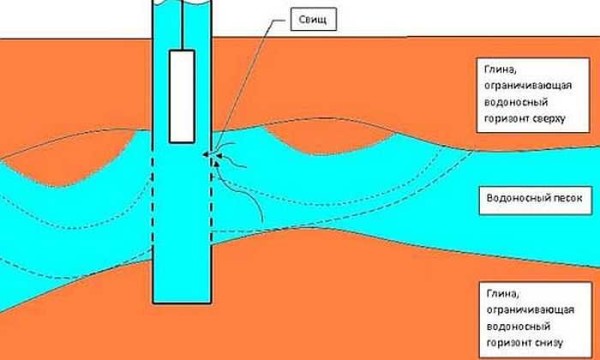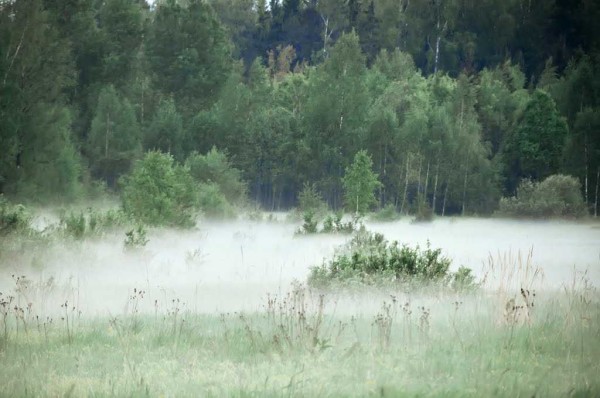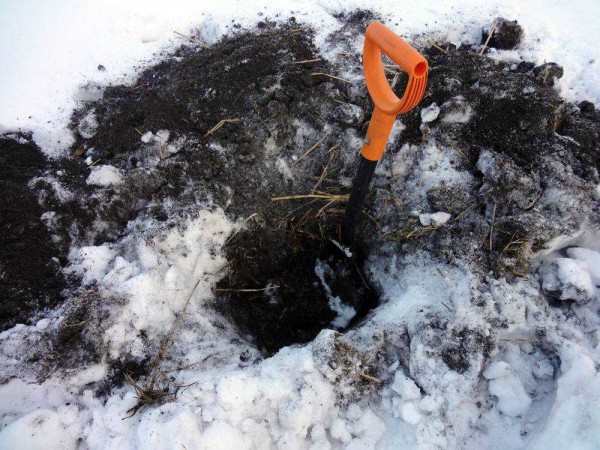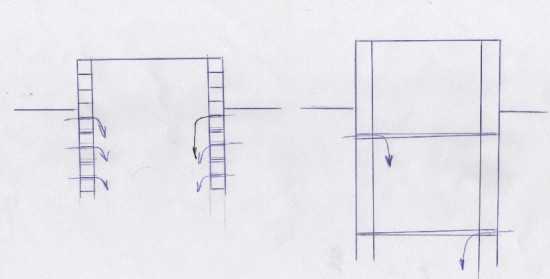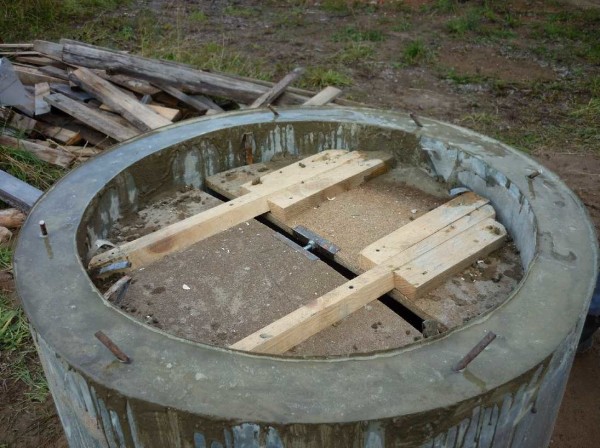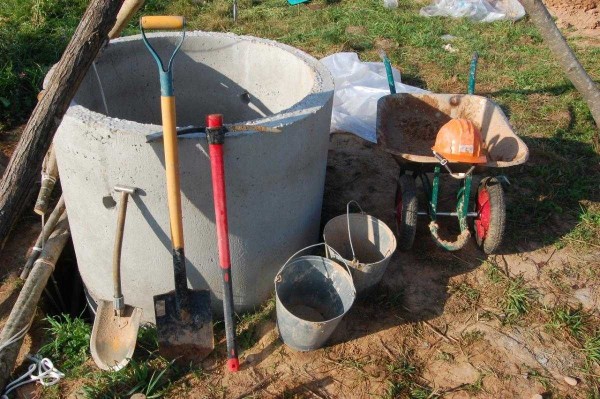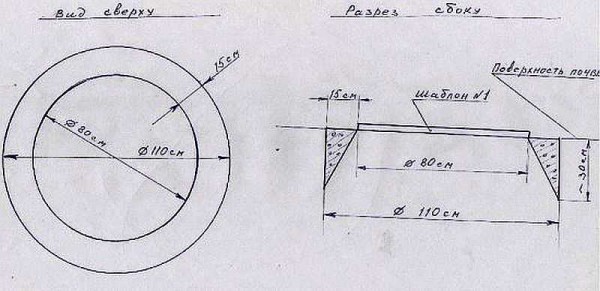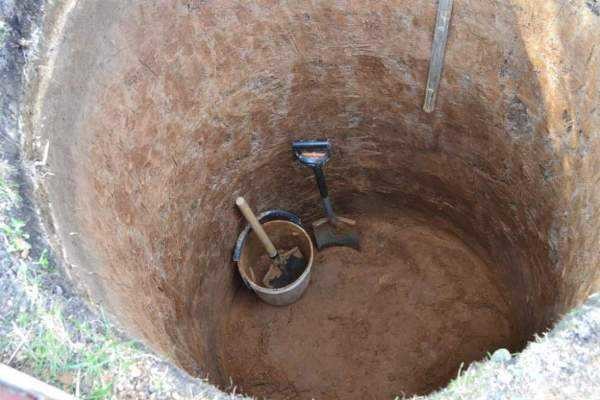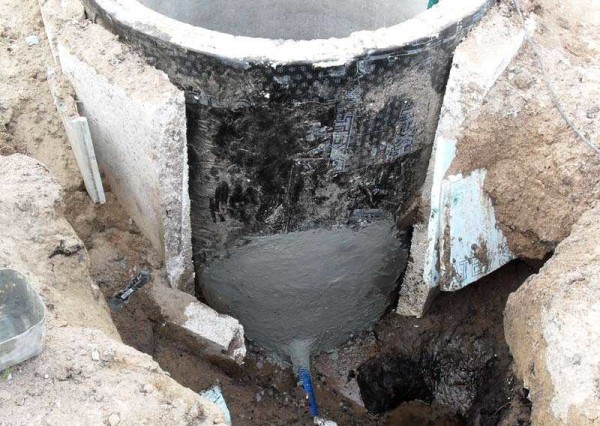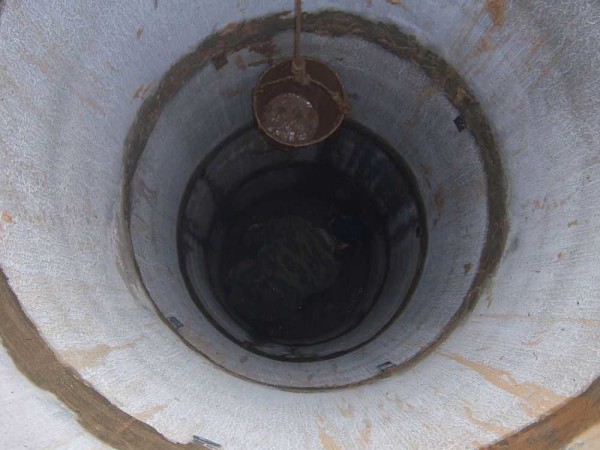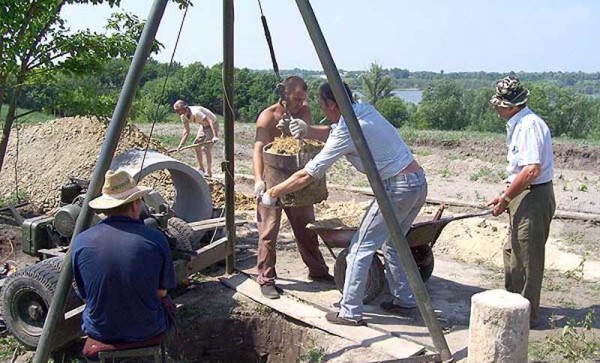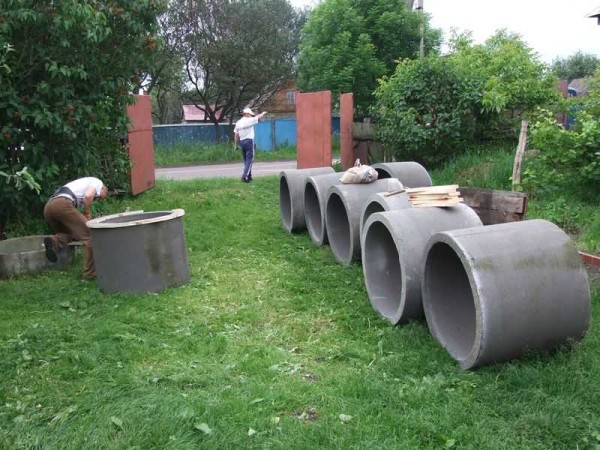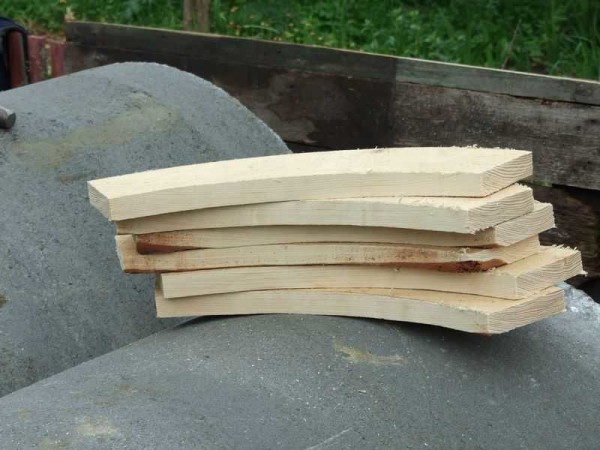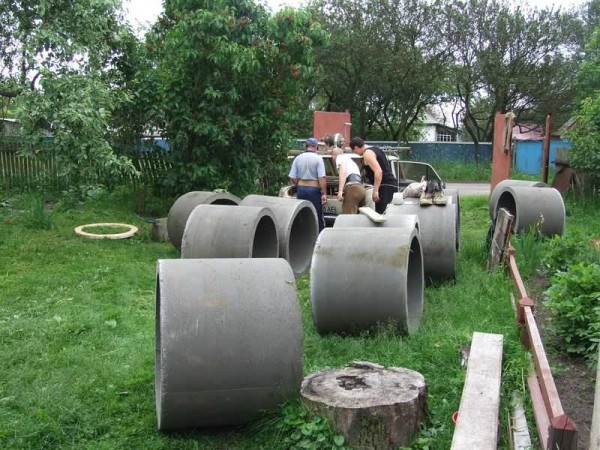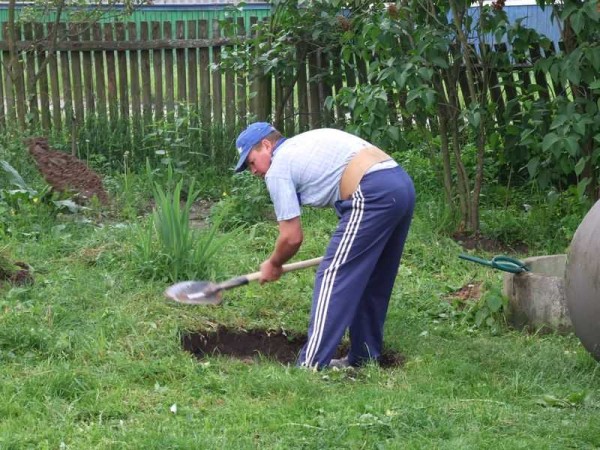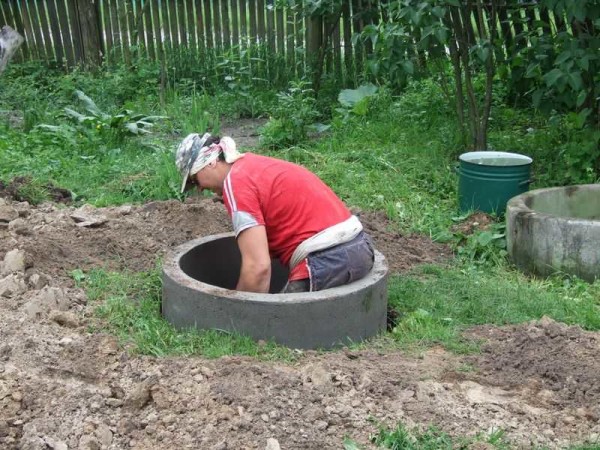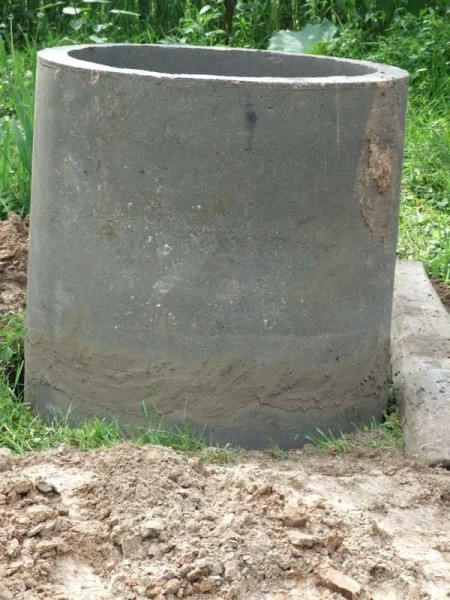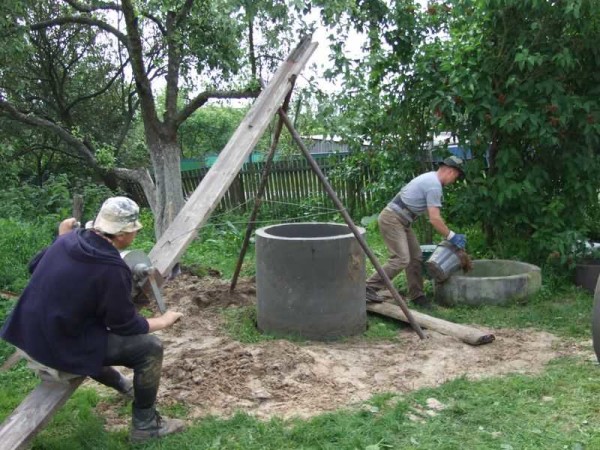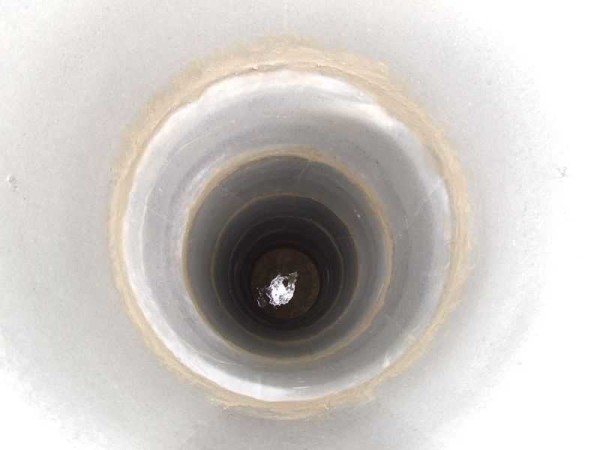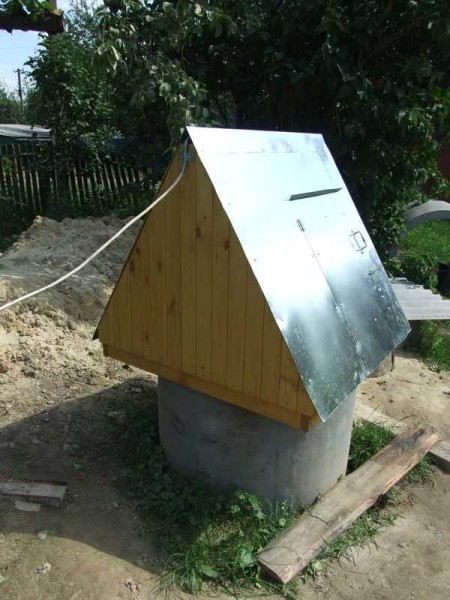How to dig a well in the country, near the house
Even if the house has a centralized water supply, the well will not be superfluous: it is too expensive to water the garden or flower beds with tap water, and in case of a shutdown it will be very useful. In the country, this is generally the main and only source of life-giving moisture. So its value can hardly be overestimated. Building a well with your own hands is not easy, but it is possible. Even if you decide to hire a team (physically difficult), you will need to control them. Not everyone does the right thing. More often, as easier and faster. So you need to know how it should be.
The content of the article
How to choose a seat
The most reliable way is to order hydrogeological surveys. You will get the exact place where you need to dig with an analysis of the water that will be there. But this service is not cheap and justifies itself if you plan to use the water as drinking water, that is, near the house of permanent residence. At the dacha, you need it mostly for technical needs, and before drinking it will be possible to clean only the part that goes into the house.
If you won't order research, be guided by several signs at once:
- position of wells in neighboring areas;
- analysis of growing plants;
- observation of insects and animals;
- folk methods.
All of these methods are only ways to roughly determine where aquifers might occur. None of them provide guarantees, but if as a result of several methods you get a more or less specific place, it makes sense to try to dig a well here.
Wells in neighboring areas
You probably know that rock strata are very uneven, just like aquifers. If the neighbors have water at a distance of 6 meters, this does not mean that you will have it exactly in the same place. It can be higher or lower, or it can go abruptly somewhere to the side. So this is just an approximate "sighting" on the ground.
Plants
This method is suitable if the plot has not yet been plowed. Examine the "local" vegetation, revealing islets of characteristic grass. Not single plants (can be accidentally introduced), namely islands, glades, etc.
Observations of animals and nature
The best predictors are small gnats. In the warm season, in calm weather, in the evening, before sunset, look at the site. If there are places where midges "hang" by posts, most likely in this place, and quite close, there is water.
To be convinced of this, you can observe this place in the morning. If the water is really close, fog will swirl here.
Traditional methods
We find an earthenware pot. Preferably not glazed. But finding one is difficult now, so any jug or pot will do. Not even this? You can also use an ordinary pan, only with a wide one.
Oven-dried silica gel is poured into the dishes. Don't know where to get it? Take ceramic bricks, break them into small crumbs (not flour, but crumbs), dry them for a couple of hours in the oven. You fall asleep in a bowl to the top, tie it with a dry cotton rag.Only so that it does not come loose. Weigh and write down the result.
In the supposed place / locations of water, dig a hole 1-1.5 meters deep, put a pan in it and sprinkle it with earth. Leave it for a day. Then you dig it up and weigh it again. The more the mass has changed, the more water there is (or closer to the surface it is).
Best time
There are two periods when it is best to dig a well: this is the second half of August and the middle of winter - after two weeks of frost. At this time, the level of groundwater is the lowest; there is almost no water table. So it will be simple to work and you will not miss the determination of the flow rate - it is minimal at this time and you will not have to suffer from a lack of water in more detail.
If a team is working, they can do it in a few days: two or three, sometimes more. If you plan to work alone, there may not be enough time in August. This is the "border" zone - before the rains. Then you have to start work earlier. Maybe since the beginning of August. At this time, there is already a little bit of water, and by the middle of the month (even if you work alone in the evenings) you will already be near the aquifer. In general, try to calculate so that the exit to the aquifer falls on the most "waterless" time. It is also advisable to finish waterproofing the walls.
Type and structure
If you have decided on the place, it remains to choose which one you will make your mine. You can only dig a mine well, and an Abyssinian one can drill. The technique here is completely different, so further we will focus on the shaft well.
Well shaft type
The most common today is a well made of concrete rings. Common - because it's the easiest way. But it has serious drawbacks: the joints are not at all airtight and through them rain, melt water gets into the water, and with it what is dissolved in it and what has drowned.
Of course, they try to seal the joints of the rings, but you cannot apply those methods that will be effective: the water must be suitable at least for irrigation. And just covering the connections with a solution is very short and ineffective. The cracks are constantly increasing, and then through them not only rain or melt water enters, but also animals, insects, worms, etc.
There are rings with a lock. Between them, they say, you can lay rubber gaskets, which will ensure tightness. There are rings with locks, but they are more expensive. But gaskets are practically not found, as well as wells with them.
A shaft made of logs suffers from the same "disease", only the cracks are even larger. Yes, that's what our grandfathers did. But they, firstly, had no other way, and secondly, they did not use so much chemistry in the fields.
From this point of view, a monolithic concrete shaft is better. It is cast directly on the spot using a removable formwork. They poured the ring, buried it, put the formwork again, stuck in the reinforcement, poured another one. We waited until the concrete “grabbed”, removed the formwork again, and started digging.
The process is very slow. This is the main drawback. Otherwise, only pluses. First, it turns out very cheap. Costs only for two galvanized sheets, and then for cement, sand, water (proportions 1: 3: 0.6). It is much cheaper than rings. Secondly, it is hermetically sealed. No seams. Pouring takes place about once a day and due to the uneven upper edge, it is almost a monolith. Just before pouring the next ring, scrape off the raised and almost set cement laitance (gray dense film) from the surface.
How to identify an aquifer
According to the technology, the soil is taken out inside the ring and under it. As a result, under its own weight, it sinks. Here is the soil that you take out and will serve as a guide.
Typically, the water lies between two water-resistant layers. Most often it is clay or limestone. The aquifer is usually sand.It can be small, like a sea one, or large interspersed with small pebbles. Often there are several such layers. As the sand went, it means that water will soon appear. As it appeared at the bottom, it is necessary to dig for some more time, taking out the already wet soil. If the water comes actively, you can stop at this. The aquifer may not be too large, so there is a risk of going through it. Then you have to dig until the next one. The deeper the water will be cleaner, but how much deeper is unknown.
Next, the well is pumped over - a submersible pump is thrown in and water is pumped out. This cleans it, deepening it a little, and also determines its flow rate. If the rate of arrival of the water suits you, you can stop there. If not enough, you need to quickly go through this layer. With the pump running, continue to remove the soil until this layer passes. Then they dig until the next water carrier.
Bottom filter in the well
When the top edge of the ring is level with the ground, roll the next one. It is placed strictly on top. The work continues. If on the first ring the soil can be thrown over the side with a shovel with a shortened handle, then on the next one it is already necessary to remove it using a gate or a tripod and a block. Thus, at least two people must work, and at least three or even four people need to turn the rings. So it is impossible to dig a well on your own, in one hand. Maybe adjust the winch.
So, gradually, the depth of the well is increasing. When the ring is lowered to the level with the ground, a new one is placed on it. For descent use hammered brackets or ladders (more correctly - brackets).
The advantages of this method of digging a well:
- You can control how tight and even the ring has become.
- You can lay the same rubber gaskets that will ensure tightness or put them in a solution.
- The walls do not crumble.
These are all pluses. Now about the cons. Working inside the ring is inconvenient and physically difficult. Therefore, using this method, they mainly dig to a shallow depth of 7-8 meters. And they work in the mine in turn.
Another point: when digging a deck with rings, you can speed up the process of subsidence and facilitate the passage of the soil with a knife. It is made of concrete, it is poured into the ground at the very beginning. To form it, a groove is dug in a circle. In cross section, it has a triangular shape (see figure). Its inner diameter coincides with the inner diameter of the rings used, the outer one is slightly larger. After the concrete has gained strength, a "standard" ring is placed on this ring and work begins.
Installing rings after reaching the aquifer
First, a mine without rings is dug. At the same time, they follow the walls. At the first signs of shedding, they are placed inside the ring and continue to deepen according to the first method.
If the soil does not crumble along the entire length, it stops when it reaches the aquifer. Using a crane or manipulator, rings are placed in the shaft. Then, they deepen another couple of rings according to the first method, increasing the flow rate.
The excavation technique is the same here: as long as the depth permits, it is simply thrown out with a shovel. Then they put the tripod and the collar and raise them in buckets. After the rings are installed, the gap between the walls of the shaft and the ring is filled up and rammed. At the same time, the upper several rings can be sealed from the outside (with bitumen impregnation, for example, or other coating waterproofing).
When working, it is also necessary to control the verticality of the walls, but it can be adjusted within certain limits. The control method is similar - a plumb line tied to a bar and lowered into the mine.
The advantages of this method:
- The shaft is wider, it is more convenient to work in it, which allows making deeper wells.
- Several top rings can be externally sealed to minimize the possibility of the most polluted waters entering.
There are more disadvantages:
- It is difficult to control the tightness of the joint of the rings: it is forbidden to be in the mine during installation. It is impossible to rotate an already installed ring in it. It weighs hundreds of kilograms.
- You can miss a moment and the mine will crumble.
- The density of filling the gap between the shaft wall and the rings remains less than the "native" soil. As a result, melt and rainwater will seep into the depths, where they will get inside through the cracks. To avoid this, a protective circle is made around the well of a waterproof material (waterproofing membrane) with a slope from the walls of the well.
Commissioning
If you think you've dug a well and that's it, not at all. You still have a series of daily exercises ahead. Here you can do them yourself, without involving help. First you need to waterproof the walls outside, then - clean and wash the walls from the inside out and pump out the water - clean the well.
After the well is dug, the rings settle for a couple of days and take their places. At this time, you do not need to do anything inside, but you can do the outer waterproofing.
Waterproofing
If the well was made according to the second method - first they dug a mine, then put rings - this stage is a little easier. You will need to widen the gap slightly to make the waterproofing. If the rings were set immediately, you would have to dig a decent ditch around. At least until the middle of the second ring. When the soil has been removed, we proceed to waterproofing.
It is best to use a coating compound. You can - bituminous mastic, you can - other compositions. In principle, you can melt or glue roll waterproofing, in the most extreme case, wrap it with foil. The film is the cheapest of all, but it will serve no more than two years, and then on condition that it is purchased expensive and reinforced.
Since you dug a well anyway, insulate it. Even if you do not appear at the dacha in winter, but maybe later you will come and cold. So make sure you have water in advance.
Wall cleaning and internal sealing
A couple of days after the well was dug and the "glass sat down", go down inside with a broom, sweep the walls. Then you wash the walls: pour it over, sweep it with a clean broom. Pour it over again, then with a broom. The water was pumped out and drained away. The procedure was repeated the next day. So - five-seven-ten days. Until the insides and the water are clear.
One more point. Not all brigades immediately coat the joints of the rings. Then after the first cleaning, you need to coat the joints with a solution (cement: sand in a ratio of 1: 3). To improve the effect, you can add PVA or liquid glass (instead of some part of water, or dilute PVA with water). It is also advisable to insure against horizontal shifts of the rings. Especially if they are without locks. For this, adjacent rings are fastened with metal plates, which are attached to the anchor. This measure is strictly necessary on unstable loose or highly heaving soils.
After the walls are washed, the water is pumped several times, you can use the water. But so that nothing attacks inside, it is necessary to close it. ABOUThow to make a house for a well, read here.
For some features of digging wells and cleaning it, see the video.
Work safety
Digging a well (with your own hands or with a team) is hard and dangerous work, especially after the first three rings have been dug in. The buckets have to be pulled out with a winch, collar or with a block, but it is heavy. It may break - either the rope or the handle may not hold up. Therefore, it is necessary to comply with safety rules:
- The person working underneath must wear a hard hat.
- Buckets should have a strong handle, better - welded, from thick wire in several layers.
- Tie the buckets on a strong rope, at the end of which a powerful carabiner with a reliable fixation system is fixed.
- Periodically check the condition of the rope, bucket handle and carabiner.
- When lifting buckets, the person working below must be on the opposite side.
- Work at the bottom one by one.
Believe me, the precautions are not superfluous. Better to be safe.
How the well was dug: photo report
They dug according to the first method - they immediately put rings. Three people worked, alternately changing: no one stayed inside for more than "one ring". These are all the nuances in short. The rest - along the way.
First, the rings were brought in and laid out on the site. A knife was assembled from wooden planks of a special shape.
It turned out a ring, according to the size of which they began to dig in the selected place.
The first concrete ring is placed on this ring. At first, the soil was only thrown away - as long as the depth allowed.
We put the second one, missed the seams inside and outside, went on to dig further.
When the second went into the level with the ground, We put a tripod with a winch and a block. So they raised and lowered the digger and the buckets with the breed.
Now: one is digging, the second is "twisting" on the winch, the third is dumping the soil. On the same winch, they lowered the well into the shaft.
The sixth ring was buried and after that water appeared. If you look at the ground, it turned out like this: black earth, sand, clay, water-bearing sand. This means that the layer where the water flows is separated by clay, which is poorly conductive. This is very good - the water should be good, as it turned out later.
After that, three more rings are installed. One was left at the end of August, when the water will be lower, we will lower the well by another meter. then the procedure is standard - wash the walls, pump out the water. So six times seven. After that, they saddled the head on the well and installed all the filling - the gate, pulled the cable out of the house, put the socket. The plans are to bring water into the house.

